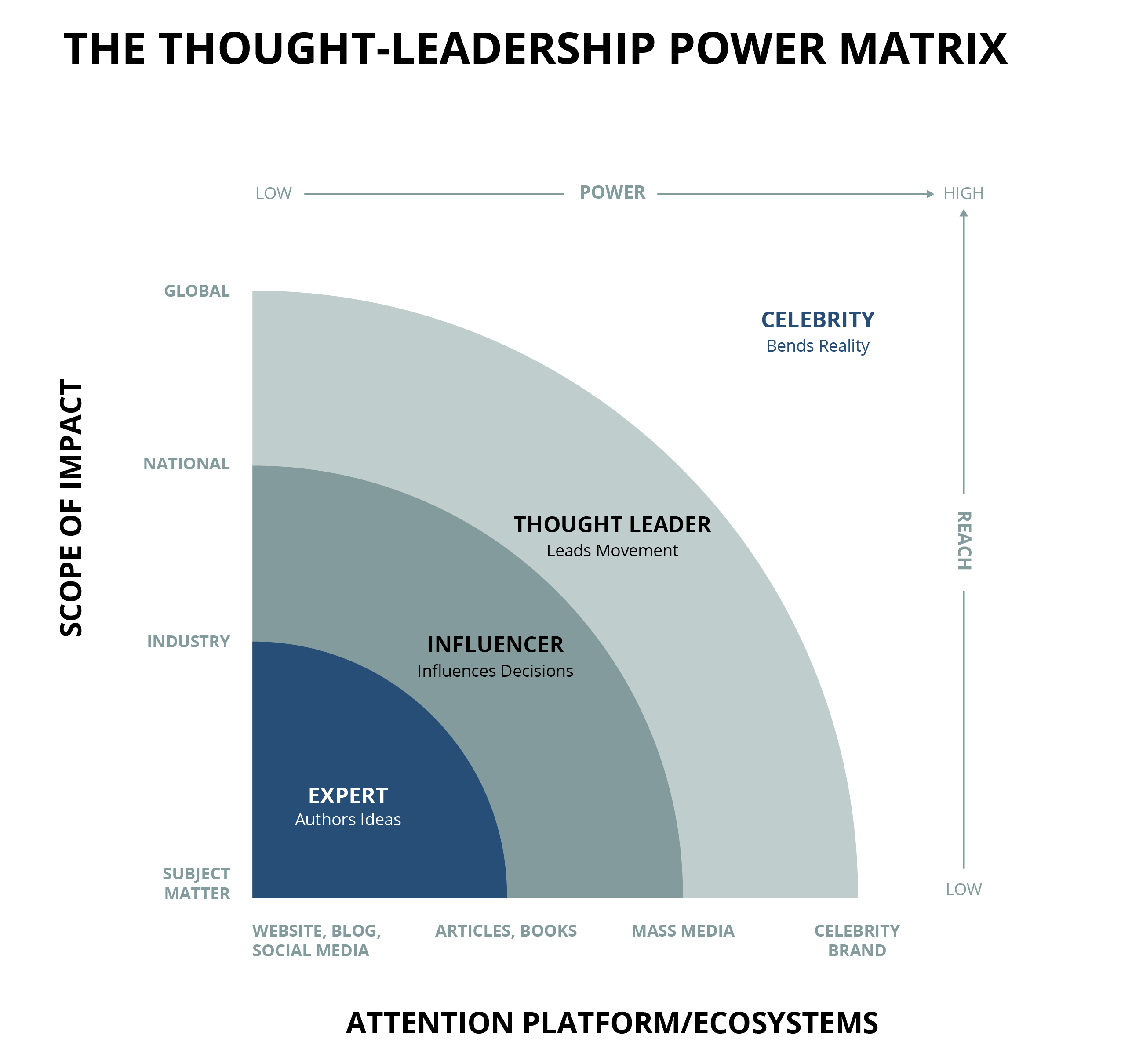In Investment marketing, Thought Leadership is NOT a Buzzword

Any marketing executive in the financial services industry will give you a list of words that you should avoid, including overused words like: bandwidth, disruptive, outside the box, move the needle and growth hacking. Thought leadership is not one of them.
Financial firms, especially younger firms that have yet to experience that dramatic climb from assets under management, need to differentiate themselves from a crowded investment services market. And, launching an investment content marketing engine that highlights the firm’s competitive advantages and unique strengths—one that builds credibility and awareness—can be an effective method. Once you have identified what makes your asset management business or investment process unique, crafting and publishing thought leadership pieces such as white papers, blogs, articles, newsletters or opinion papers can help investors and partners find out about your product or service and can help build credibility and trust in your process.
Granted, the words thought leadership do not need to appear in a firm’s literature, but developing investment thought leadership should be on the mind of any asset management or investment service provider’s executives and marketing leaders. Investment-related thought capital is one of the keys to making your firm stand out, along with thoughtful investment marketing, advertising and branding strategy of course.
What is thought leadership in the financial industry?
Thought leadership and content marketing encompass all of the firm’s intellectual capital and makes the firm more publicly visible, or at least a targeted slice where their specific investor target audience is most likely to search for and consume the content. A thought leader is an individual or firm who is recognized as an informed opinion leader and whose expertise is sought by others. Now, other industries may refer to these as experts or influencers, but in the investment marketing world some people would argue that thought leaders have a more powerful, broader scope than subject matter experts or influencers. See graphic below.

Source: The Marketing Journal, January 2017
A thought leadership campaign in the investment industry seeks to disseminate that message and build credibility for the firm or individual, and to create awareness for that expertise. Making a comment on the distinction of true expertise marketing, the CEO of Thought Leadership Lab says, “Thought leadership is not about being known. It is about being known for making a difference.”
Matt Brunini, President and Founder MBC Strategic, a financial and investment marketing and branding agency in Santa Monica adds, “Thought leadership campaigns should be centered around your products, unique story and expertise. They should be built to support a strategic marketing and branding campaign that utilizes that unique story. And, that message should be regularly published on multiple channels and platforms—especially in the crowded asset management and investment services marketing space as you really need to reach your market wherever they consume content.”
Best practices in investment industry thought leadership

Source: BuzzSumo, November 2018
- Length of Articles – One of the common misperceptions we come across in thought leadership is in length of articles. With dwindling attention spans, it seems intuitive that your thought leadership be short and punchy, yet a study that analyzed over 100 million articles found that people are more likely to share longer articles.[1] Around 2,000 words is a good minimum. Not only will it separate you from the majority of folks who are putting out brief blog posts, but you’ll have more opportunity for SEO keywords and it will increase “average time spent on site” which search engines will use to increase your rankings.
- Quality over Quantity – In the past, pumping out article after article littered with keywords was the way to top the search rankings, but search engines have gotten smarter. They now look further into quality and depth of content rather than just volume. This is good for aspiring investment industry thought leaders. If someone goes to your website from a Google search and finds a useless article, you’ve just created a bad first impression. However, if their search brings them directly to an article you’ve published that answers their questions, then you’re starting off at a much better place and they’re more likely to continue navigating through your content and website.
How thought leadership is used in investment expertise marketing
An example of a thought leadership campaign that proved successful was an ETF provider with an array of funds covering different innovation strategies. They had deep expertise and knowledge based on their creation of indexes and funds around different rules-based strategies that scored and screened companies in unique market subsets.
MBC Strategic put together a strategy that included web articles, financial blogs and magazine articles which then all linked to their website, with keywords to the appropriate content and hyperlinks to the ETFs that were created. The firm was able to establish itself as a leader in rules-based innovation and screening and was able to parlay that expertise to launch additional funds and grow their asset base.
Like a branding campaign, your thought leadership efforts are, in many ways, how your target audience perceives you. Therefore, your thought leadership pieces must attract new clients through clear and differentiated messaging and secure a positive perception to the masses by building and maintaining trust. And that can be tailored that to the culture of your firm. Investment thought leadership campaigns are not short-term, they are a long-term investment in your content marketing and market positioning that requires dedicated and consistent effort.
A strategic thought leadership campaign help investment management and financial advisory firms to differentiate themselves and stand apart from the rest of their competitors, allowing them to capture more market share and increase their brand value.
If you’d like to learn more about how your firm might be able to leverage thought leadership, please reach out to our team and we’d be happy to start a discussion.
Published:
Tags: buzzwords not to use, financial services industry marketing, financial marketing thought leadership, buzzword marketing, thought leadership marketing, investment industry marketing, award winning advertising agency, award winning financial service marketing, branding for investment industry, investment brand strategy, MBC Strategic, MBC Strategic investment marketing